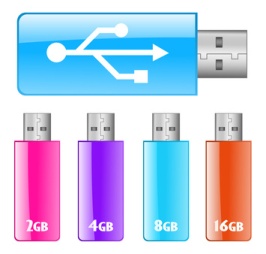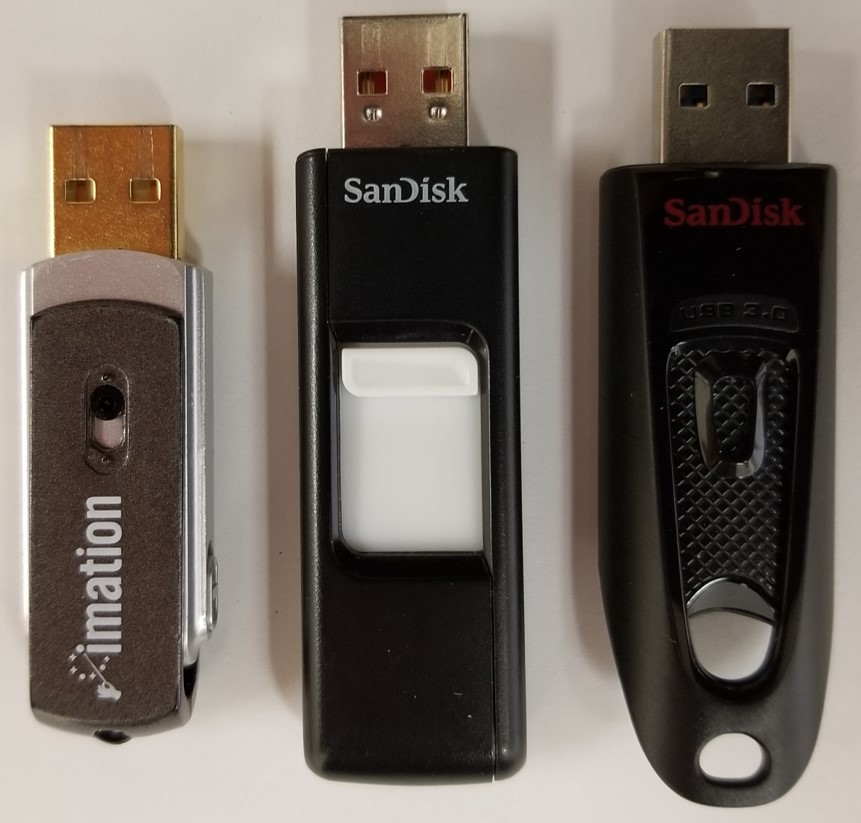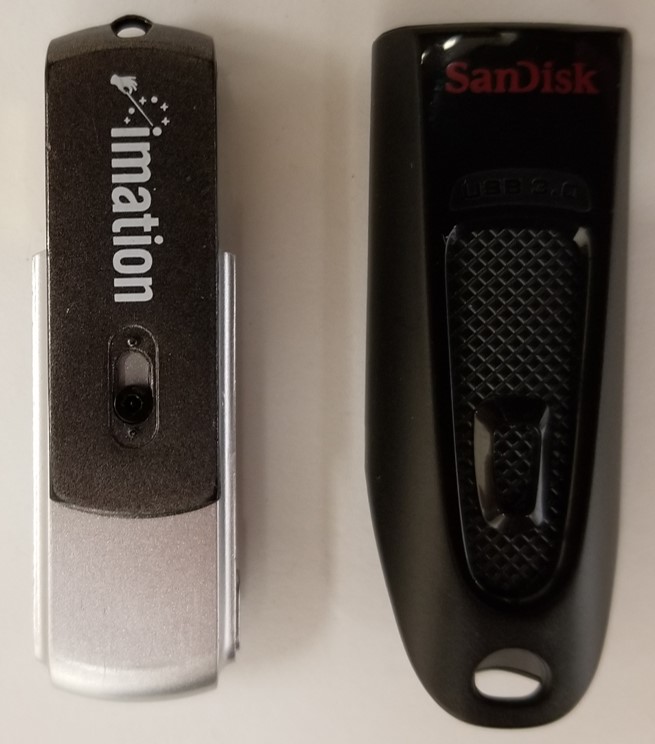- Home
- USB Flash Drives
Flash USB Drive
A flash USB drive is also referred to by several other names. Examples are USB memory stick, USB pen drive, flash memory drive, flash memory stick, etc. This device uses flash technology to store data. Flash memory devices store data in semi-conductor memory chips, which are composed of millions of microscopic memory cells or transistors. The movement of electrons in the tiny cells or transistor circuits in these chips determines whether the digital bit is a “1” or “0”.
If current flow is detected in the memory cell, then this is equivalent to the digital 1 bit. When no electrical current flow is detected, then the memory cell represents a 0 bit. A series of these integrated cells creates circuits, which are able to construct the digital code for the information that is being stored. Any type of information can be stored on a USB flash drive, from text to video, as is possible with other types of storage media. Visit the how USB flash drive works for more information.

Computers have utilized flash technology for many years, but now flash memory has caught on as an everyday removable storage medium. The reason for its surge in popularity is due to the small size, ease of use, quick read and write times, and large storage capacity. The only current downside is the cost. When you consider price per GB, flash memory storage is more expensive that other storage options such as hard drives or optical disc media (DVDs and Blu-rays). Despite the higher cost, the other factors provide good benefits and flash memory is commonly being used to transfer data from one device to another and to store data for the longer term.
A flash USB drive is one of several types of flash memory devices. Other examples of flash memory storage devices include Compact Flash (CF) cards, Secure Digital (SD) cards, Secure Digital High Capacity (SDHC) cards, microSD cards, microSDHC cards, etc. Many of the flash card formats are used in electronic devices such as digital cameras, digital camcorders, and cell phones. A USB pen drive or USB memory stick is used primary with computers. By simply inserting the flash USB drive into the USB port of the computer, this flash memory device can be used as a storage or file transfer device. Another type of memory device gaining popularity is the Solid State Drive (SSD). This storage medium is replacing the hard disk drive in desktop and laptop computers.

Is this type of storage device suitable for storing digital scrapbooking projects or any other type of digital information? For the transfer of information from one computer to another, the USB flash drive works well and is very convenient. For the long-term storage of information, there has been some scientific testing that indicates very good longevity. Real life experience has also shown this type of storage media to be durable and long lasting. However, whether this type of storage media were properly manufactured or not and how the media are stored and handled all affect the longevity of the flash USB drive and other types of flash media.
Provided below, you will find some information on the proper storage of USB drives.
Select a Durable Casing for the Flash USB Drive
USB memory sticks do appear to be very durable and can withstand a variety of adverse conditions. Countless anecdotal reports exist discussing the survival of the flash drives after subjected to abuse, such as through a wash and dryer laundry cycle. This is especially true when purchasing USB stick drives with a fortified exterior shell. Therefore, the first tip if using this type of media for long-term storage is to purchase the media with a very rugged exterior shell.
Protect the Connection Interface
The most vulnerable part of the USB flash drive is the connection interface. When using the USB drive, be careful when inserting it into the USB port of the computer or other reading device. Ensure that you have the correct orientation and do not try to force it into the port. When not in use, the connection interface requires protection. This is achievable in several ways depending on the brand of flash drive and type of exterior shell. For example, a cap can be placed on the connection to protect it or in other situations, the actual connection can be retracted into the body of the USB flash drive.

Disconnect When Not in Use
When the flash USB drive is not in use, it should not be left in the USB port of the computer. If left in the port without disconnecting it, then the pen drive will communicate with the computer on a regular basis and this wears out the media. When removing the flash drive from the USB port, it should be properly ejected from the computer by right clicking on the USB drive icon and selecting the disconnect or eject USB drive option.
Store under Proper Temperature and Humidity
There are no specific standards for the storage of flash USB drives. The only published information currently available comes from manufacturers of the product. Below is a list of some of the storage temperatures and relative humidities compiled from manufacturer’s product literature.
Storage Temperature
• -40 degrees Celsius to 100 degrees Celsius
• -40 degrees Celsius to 85 degrees Celsius
• -20 degrees Celsius to 70 degrees Celsius
• -20 degrees Celsius to 65 degrees Celsius
• -20 degrees Celsius to 60 degrees Celsius
Storage Relative Humidity
• 30 % to 85 % (no condensation)
• 30 % to 80 % (no condensation)
• 20 % to 95 % (no condensation)
• 5 % to 55 % (no condensation)
• 5 % to 85% (no condensation)
These storage conditions are very broad and extreme. The media may survive these conditions in the short term, but for long-term storage, it is best to be a little more conservative. In general, avoid very hot or very cold temperatures. More specifically, store flash media of any type in the 18 degrees Celsius to 23 degrees Celsius range most of the time. For relative humidity, keep the level between 20 to 50 percent.
USB Flash Drive Problems
Some problems may occur with USB drives. One of the problems that is sometimes encountered with this type of storage media is USB not recognized or USB device not recognized.
Often problems are not visible and therefore, USB analyzer software is required to determine if there are any issues with USB flash drives. Check Flash is another type of software that may be useful in determining the condition of flash storage media.
Information on how stable are flash drives can be found as well.